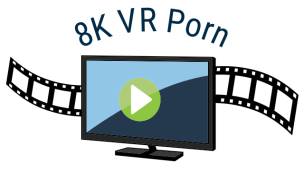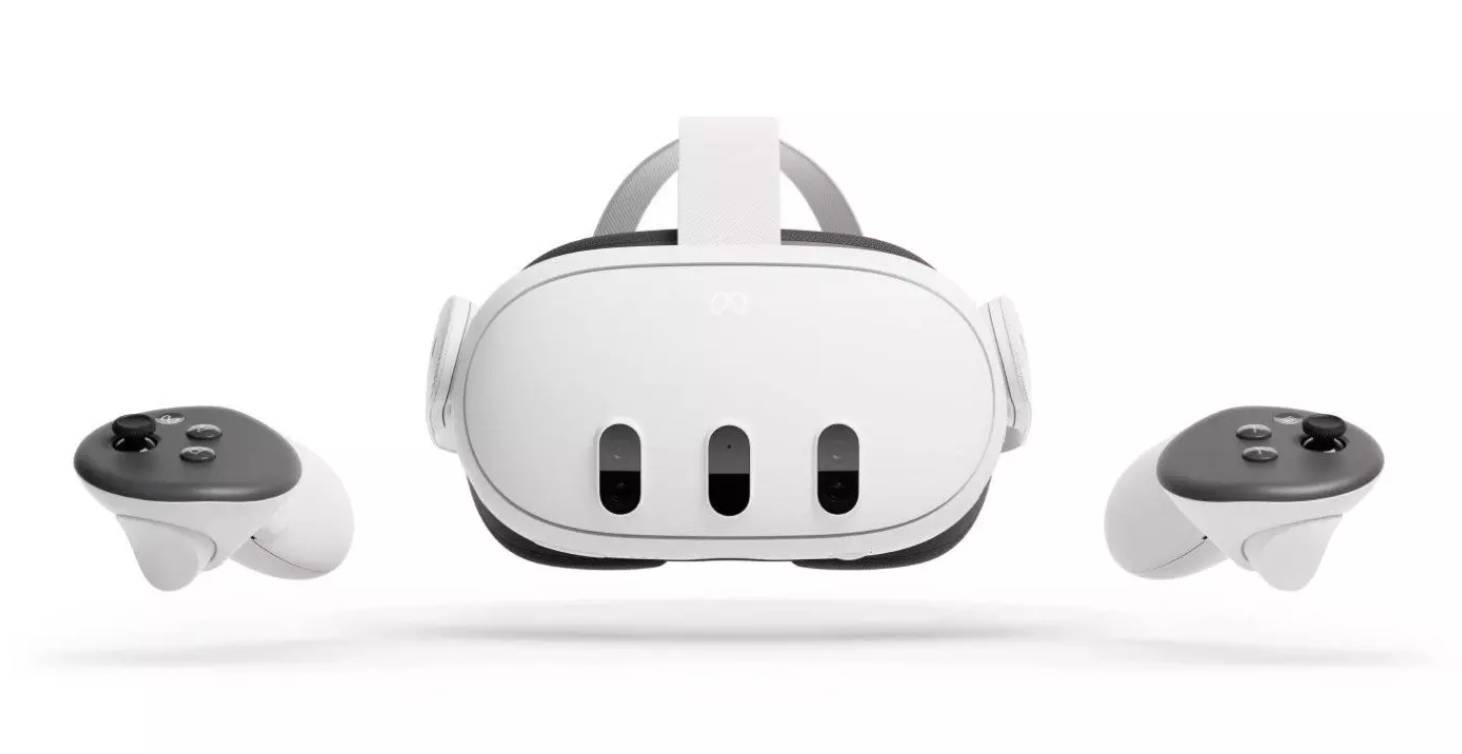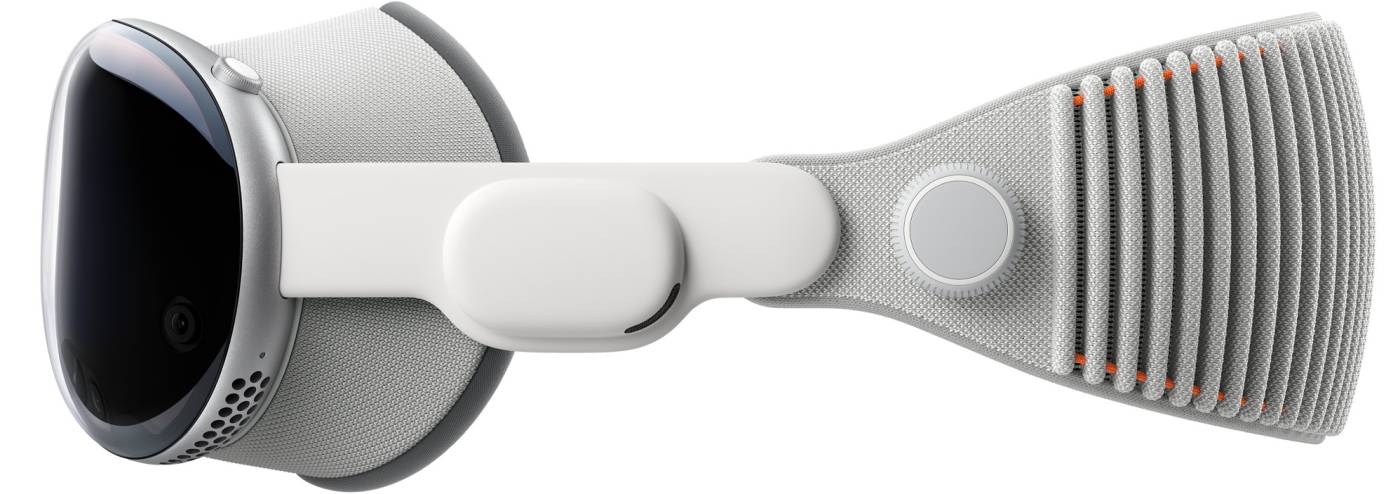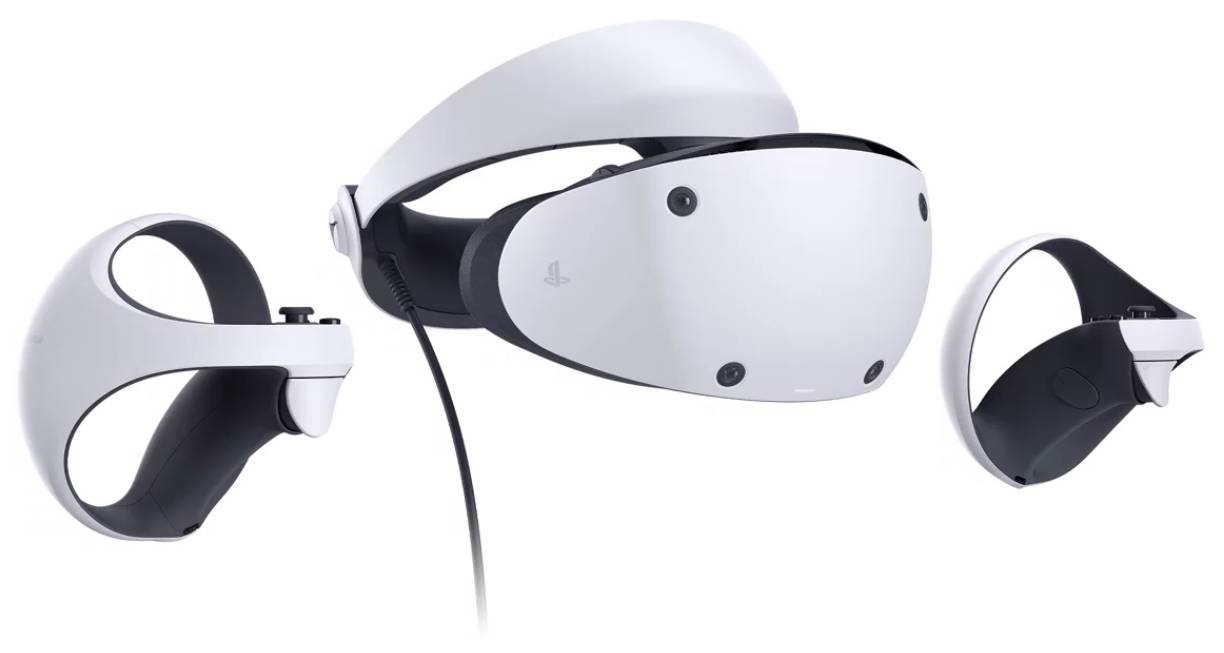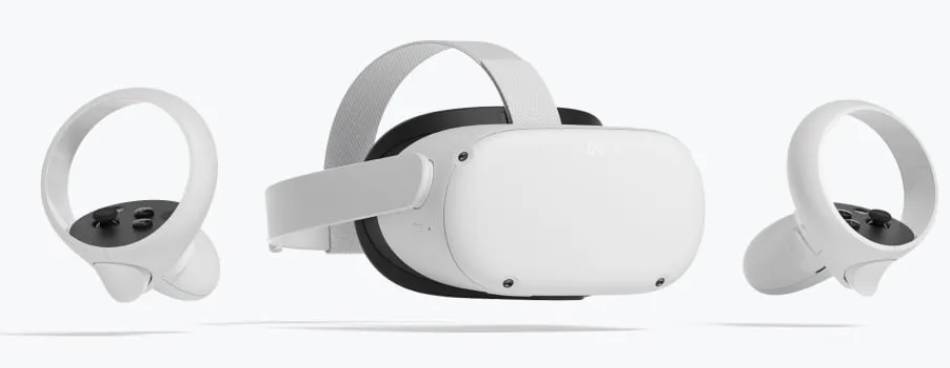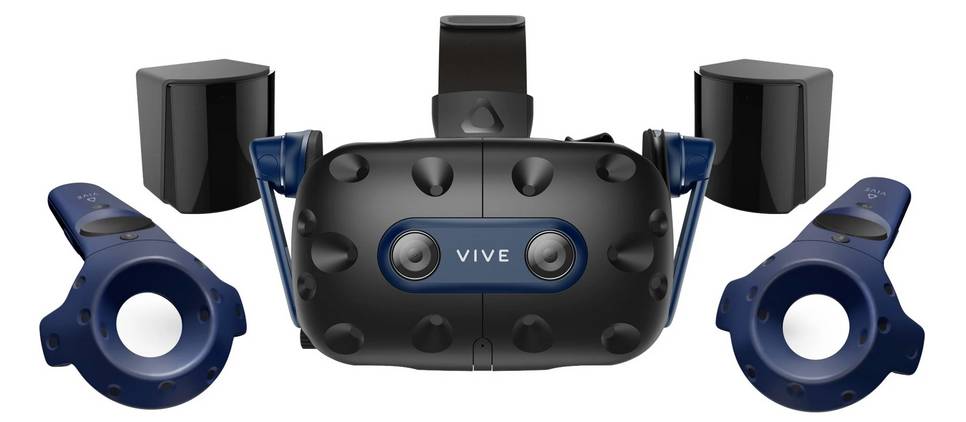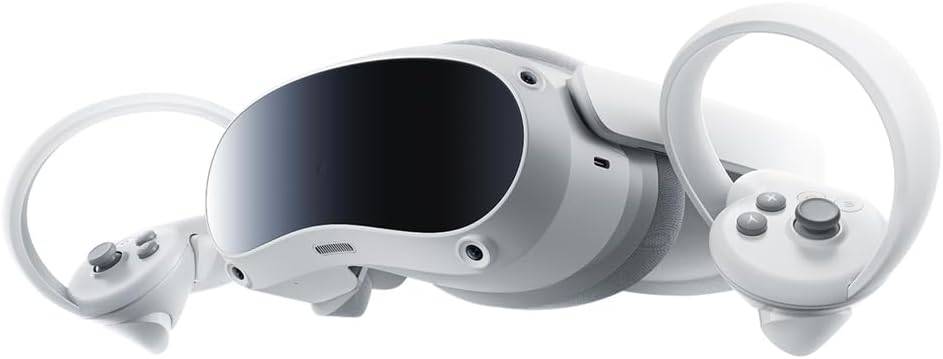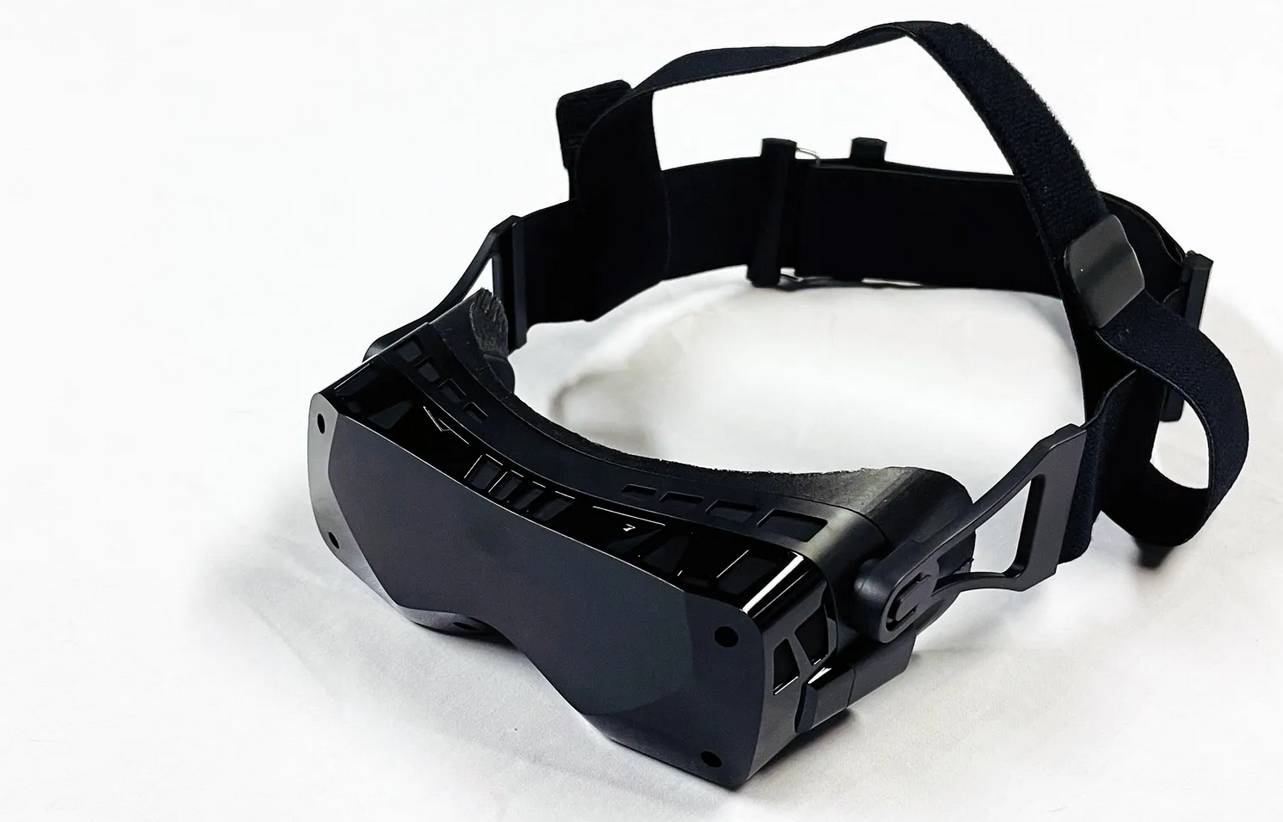Competition for the best VR headset is fierce at the moment. Many people are choosing the Meta Quest 3, but the PSVR2 is also very popular because of its upcoming support for the PC, on Aug. 7. Of course, the Apple Vision Pro got a lot of attention earlier this year, but the device has become anything but a VR standard because of its price, very small offering of games and lack of broader support.
But the best news is that you don't have to spend 3500 euros for a good VR experience in 2024. Some of the best VR headsets, meanwhile, are simply affordable!
Whether you want a more elaborate virtual workspace, fantastic 3D virtual porn or simply enjoy gaming, there are some great VR headsets that come in handy in all these situations.
Below is a list of the best VR headsets for different types of users currently available:
1: Meta Quest 3
Overall best buy in 2024
Price: €549
- 128 GB storage space
- 2.2 hours of battery life
- 110 degrees horizontal and 96 degrees vertical field of view
- Maximum refresh rate of 120 Hz
>> Read our full review of Meta Quest 3 here <<
The Meta Quest 3, the sequel to the hugely popular Quest 2, is still our top budget choice and the best VR headset overall. The Quest 2 is still a very good buy but because of its improved lenses, smaller size, higher screen resolution and greater processing power, this new model wins!
Meta's latest headset has thinner pancake lenses instead of the larger Fresnel lenses, which adds to the smaller design of the whole thing. It is more comfortable to wear because it sticks out of your face less, but the fabric strap that comes with it is still underwhelming, so we recommend buying a better one.
You can use the Quest 3 without a tether, but you'll probably want to connect it to your gaming PC via a good USB Type-C cable to access your Steam library or your VR porn video collection. If you use Meta's Air Link, that option works best over a strong Wi-Fi connection. For many of the VR titles available in the headset's own store, the integrated Qualcomm Snapdragon XR2 Gen 2 processor is sufficient, but it falls short of a separate graphics card.
With improved passthrough cameras and a 2064 x 2208 resolution LCD screen for each eye, virtual and mixed reality images are sharper and of higher quality than in the Quest 2. A quick double tap on the side of the headset gives you a nice overview of your surroundings.
In addition, the Quest 3 comes with a set of improved Touch Plus controllers, which do not have the distinctive ring around the hand like the older Quest 2 controllers. Despite the minimalist design, the tracking of the controllers performs as well as you would expect.
One of the best features of the headset is the ease with which you set it up. After a few simple steps on the headset and the app, you can get started. This was different with other headsets in the past!a
The Quest 3 lasts just under two hours when playing wireless games and streaming videos, so you won't be able to use it all day without charging. The headset recharges in about the same 2 hours, and you can continue to use it while it is charged via a USB cable!
Right now, and probably for the rest of 2024, the Meta Quest 3 is the best buy if you lose to the price/quality ratio. For 550 euros you get a tremendously good headset that you will enjoy for a long time!
PROS | CONS |
Smaller than Quest 2 Very good performance Huge additional options Mixed reality cameras Very sharp screen | A lot more expensive than its predecessor Video passthrough could be better No improved battery No OLED screen |
2: Apple Vision Pro
The best premium VR glasses
Price: Very expensive
- 128 GB storage space
- 2.2 hours of battery life
- 110 degrees horizontal and 96 degrees vertical field of view
- Maximum refresh rate of 120 Hz
Granted, the Apple Vision Pro is closer to mixed reality than virtual reality, but that's the general direction this market is going right now. So we do want to put it in this list. The Vision Pro is not yet available in the Netherlands, but given its foreign prices, you'll have to think about 3,000 euros or more. Resellers are offering American versions for over 4000 euros!
Apple has shown remarkable ingenuity in both hardware and software development to address numerous common problems with headsets. For example, microOLED displays, with pixels the size of red blood cells, provide extremely sharp viewing and currently have the lowest response times in the industry at 12 milliseconds. Moreover, the futuristic hand- and eye-tracking experience far surpasses that of competitors.
There are a few problems, though! Besides the exorbitant asking price of $3500, there are a few other drawbacks: the attached battery occasionally gets in the way, the appearance of the avatars during FaceTime calls is a bit odd, and certain popular apps are missing for now.
But with the upcoming VisionOS 2 update, you're looking at the most inventive product Apple has released since the iPhone. This VR/AR system is the most technologically advanced of them all and far above existing VR glasses. But again...that price!
PROS | CONS |
Operation with intuitive gestures Beautiful OLED screens Convincing spatial audio Watching video is insane Wow factor | Hugely expensive Relatively heavy Poor battery time Limited number of apps |
3: PlayStation VR2
Best VR glasses for console
Price: €599
- 128 GB or 256 GB storage space
- Battery life of three hours
- 110 degree field of view
- Maximum refresh rate of 120 Hz
One of the best headsets we've reviewed is for a console! And that's the VR2 for the Playstation 5. With its two 2K OLED HDR panels, you get stunning 4K quality. It also has some very welcome new features like haptics on the headset and eye tracking. You do, of course, need a PlayStation 5 to use the PS VR2. But at around 1100 euros for the whole thing, you're well below a combination of a good PC with VR glasses in terms of price!
However, there are a few limitations to this susteem The PS VR2 costs $ 550, which is more than the PS5 itself. Moreover, it is uncertain when the game library will run out. Gran Turismo 7 and Horizon VR are two of the few exclusives from the first series, and not many more have been released after that. However, it is still the simplest method of using high-end VR, and it is a significant improvement over the PS VR original.
PROS | CONS |
Beautiful OLED panels Haptics (vibrations) in the headset Sense controllers work well The glasses look modern | Pretty pricey for an "extra device" Few new releases |
4: Meta Quest 2
Best cheap VR headset
Price: €150-200 2nd hand
- Storage options: 128 GB and 256 GB
- Battery life: two to three hours
- Field of view: 104 degrees
- Maximum refresh rate of 90 Hz
For the vast majority of new virtual reality consumers, the Meta Quest 2 is still the best low-cost VR solution, even after all the years the headset has been around! The Quest 2 is comfortable to wear for extended periods of time and functions as a great standalone headset. It is still the best way to get started with VR without spending too much.
Meanwhile, the Meta Quest 2 is no longer available in stores but since the Quest 3 is here you can find the device on any 2nd hand market for very nice amounts.
What is still a big advantage is that it comes with Meta's excellent touch controllers and an extensive library of games. For more elaborate VR experiences, you can pair the Quest 2 with a computer.
The Quest 2 has fast-switching LCDs with an eye-by-eye resolution of 1832×1920. It also has a smooth refresh rate of 90 Hz, which is remarkable for a mobile-only device. While the Quest 2's field of view is not the best (it is measured at about 90 degrees), it is still sufficient to properly experience most virtual reality apps. Changing the face pads can help expand the field of view a bit. And for $49 (or $29 with a built-in battery and case), you can buy the Elite headband for an even more comfortable fit.
While it may not offer the most modern VR experience, the Quest 2 is without a doubt the most affordable quality VR headset available!
PROS | CONS |
Very cheap on the 2nd hand market Excellent VR experience Many apps and software Good touch controllers Can be connected to a PC | Newer software does not always work Reasonably large headset Has fewer options than the new Quest 3 |
5: HTC Vive Pro 2
The best VR headset for PC
Price: €890
- Dimensions: 4896 x 2448
- LCD screen
- Connectivity: USB 3.0, DisplayPort 1.2
- 120° field of view
- Refresh rate up to 120 Hz
If you're looking for the best VR headset for PC gaming that money can buy, we recommend the HTC Vive Pro 2. At nearly 900 euros for the headset alone - not to mention the necessary peripherals and high-end PC - this is undoubtedly not for a beginner. Nevertheless, the HTC Vive Pro 2's 4896 x 2448 resolution, accurate motion tracking and Steam VR integrations make it a must-have for those willing to spend a lot of money.
With a resolution of 4896 x 2448 pixels per eye, this headset is among the top of the market and offers incredibly clear images not available in less expensive models. Since you depend on a PC for this, it must be able to handle the demanding tasks required to achieve that level of visual fidelity.
You really have a special headset when you combine that very high resolution with the huge field of view of 120° and a refresh rate of up to 120Hz. In addition, subjectively speaking, the design is very beautiful!
It is important to note that you will need some extra time to adjust the settings for best results, as it took me a day to find the ideal settings for my eyes! But once you get there, it's well worth the investment you've made.
There's no denying that the HTC Vive Pro 2 offers one of the best PC VR experiences out there. Yes, there are competitors that perform some tasks even better, but they may be even more expensive and you don't get the same level of graphical fidelity.
For the complete experience, you'll need to purchase two Steam VR base stations and motion controllers, which will cost you about $600 more. But once you do that, you have access to a new level of motion and tracking that other VR headsets have a hard time matching.
PROS | CONS |
Great gaming performance Many games available Very high resolution | Difficult to set Quite expensive Can get very hot |
6: Pico 4
The best alternative VR headset
Price: €400
- 128 GB storage space
- Maximum refresh rate of 90Hz
- Resolution of 4,320 x 2,160
The Pico 4 is the ideal alternative VR headset when the Meta Quest 2 is too simple and the Quest 3 and Valve Index are too expensive.
The small form factor and the use of pancake lenses, similar to the Quest 3, contribute to the increased comfort. True-to-life images are produced when the 2160 x 2160 LCD panels are combined with it, but the field of view and refresh rate are not as good as with Meta's latest headset.
The Pico 4 has a full-color passthrough, is well adjustable and is quite comfortable for people who wear glasses. It offers smooth tracking, especially for the controllers, and the setup process is relatively easy, even though it does not use base stations.
This is all important, because with any luck the Pico 4 will cost less than the Quest 3, and it's a wonderful replacement for Meta's latest model if that's just a bit too much for your budget. And while the hardware is nowhere near as good as that of the Pico, the Quest 2 is still usually cheaper.
However, the availability of the headset varies.
Still, this is the best option we have tried so far in terms of lesser-known virtual reality glasses. While the delivery is mixed, the specs are generally quite impressive.
PROS | CONS |
Accurate tracking Cost relative to performance Good graphics Easy adjustment of headset Excellent color throughput Cheap | Not available everywhere Sometimes has problems with Wi-Fi streaming A little heavy in the front |
7: Bigscreen Beyond
Best VR quality
Price: €1,369
- 90Hz maximum refresh rate
- Field of view: 102 degrees
- Battery life: 2 hours
- No storage capacity
Bigscreen's Beyond is a distinct take on a VR headset. It's essentially an improved Valve Index. And instead of a huge headset, it's more like a hefty pair of glasses. The Beyond of the lightest VR device we've ever seen; it's poor 127 grams and has bright Micro-OLED panels with near-perfect contrast. With the Beyond, black is really black, unlike LCD screens.
However, the price of the Bigscreen Beyond is a drawback. If you already have the hardware from your Valve Index then the Bigscreen Beyond costs €1,369. However, if you are starting from scratch, you will also need to purchase two Index controllers and two Steam VR base stations. The total then goes toward €2,000.
When you place an order for the glasses on the Bigscreen website, a 3D face scan is used to create a personalized face pillow needed for the Bigscreen Beyond. Compared to other headsets, this unfortunately makes sharing with friends more difficult. Because it is so thin, there is also no room for glasses. Bigscreen sells prescription lenses for a higher price. Of course, you don't have the same degree of mobility as with the wireless Meta Quest headsets-you'll always have to use a connection to your computer.
Despite its complexity, the Bigscreen Beyond is the most engaging PC VR experience I've seen to date. It's so light, so you can carry it around for hours. It's the best choice for VR enthusiasts who don't mind the cost and complexity in exchange for full immersion thanks to the gorgeous screens!
PROS | CONS |
Incredibly light Works with Valve Index accessories bright Micro-OLED screens Beautiful overall design | Absence of internal audio Very pricey Mandatory connection to PC |
